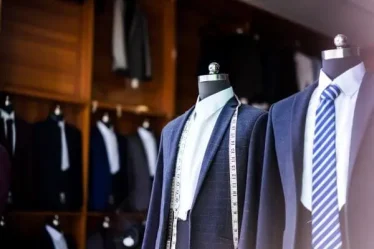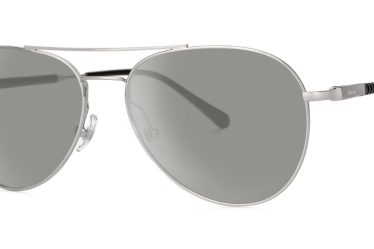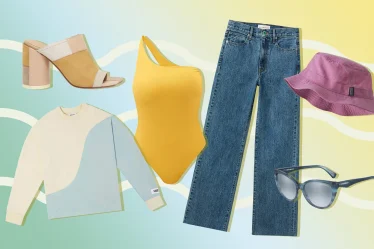Introduction
In today’s world, the fashion industry faces increasing scrutiny over its environmental impact. As consumers become more conscious of the consequences of their purchasing decisions, there is a growing demand for sustainable alternatives. This article explores the realm of eco-friendly men’s wear, delving into its significance, benefits, challenges, and the future it holds.
The Environmental Impact of Fast Fashion
The fast fashion phenomenon has wreaked havoc on the environment. The relentless pursuit of cheap, disposable clothing has led to alarming levels of pollution, vast amounts of textile waste, and a significant carbon footprint. From the pesticides used in cotton farming to the toxic chemicals discharged during textile production, the environmental toll of fast fashion is undeniable.
Benefits of Sustainable Fashion
In contrast, sustainable fashion offers a ray of hope. By prioritizing environmentally friendly materials, ethical production practices, and longevity, sustainable garments aim to minimize harm to the planet. Not only does this approach reduce pollution and waste, but it also addresses social justice issues within the fashion supply chain.
Characteristics of Eco-Friendly Men’s Wear
Eco-friendly men’s wear encompasses a range of attributes, from the use of organic and recycled materials to sustainable production methods and fair labor practices. Brands committed to sustainability prioritize transparency and accountability, allowing consumers to make informed choices about the clothes they buy.
Popular Brands Leading the Way
Several pioneering brands have emerged as leaders in the realm of eco-friendly men’s wear. Companies such as Patagonia, Outerknown, and tentree are renowned for their commitment to sustainability. Through innovative materials, transparent supply chains, and impactful initiatives, these brands are reshaping the fashion landscape.
Tips for Making Sustainable Fashion Choices
For consumers looking to embrace sustainable fashion, education is key. Researching brands, understanding eco-friendly materials, and adopting a mindset of conscious consumption can empower individuals to make a positive impact through their clothing choices. Embracing minimalist, timeless designs also contributes to a more sustainable wardrobe.
Challenges and Roadblocks
Despite the growing momentum behind sustainable fashion, challenges remain. Accessibility and affordability are significant barriers for many consumers, with sustainable options often commanding a higher price point. Furthermore, greenwashing—the deceptive marketing of products as environmentally friendly—poses a threat to genuine sustainability efforts.

The Role of Technology in Sustainable Fashion
Technology plays a pivotal role in advancing sustainability within the fashion industry. From innovations in textile recycling to sustainable manufacturing techniques and digital solutions for eco-conscious consumers, technology offers promising avenues for reducing the environmental footprint of clothing production.
Impact of COVID-19 on Sustainable Fashion
The COVID-19 pandemic has brought both challenges and opportunities for sustainable fashion. While consumer behavior has shifted and economic uncertainty looms, the resilience of sustainable brands and the potential for positive change have come to the fore. As consumers reevaluate their priorities, there is an opportunity to build a more sustainable fashion industry post-pandemic.
Government and Policy Initiatives
Government regulations and policy initiatives also play a crucial role in shaping the future of sustainable fashion. From bans on single-use plastics to incentives for eco-friendly practices, policymakers have the power to drive positive change within the industry. Collaboration between government, industry stakeholders, and consumers is essential for creating a more sustainable fashion ecosystem.
The Future of Eco-Friendly Men’s Wear
Looking ahead, the future of eco-friendly men’s wear is promising yet uncertain. With projections pointing to continued growth in sustainable fashion, there is potential for transformative change. Innovations in materials, production processes, and consumer engagement hold the key to a more sustainable and equitable fashion industry.
Conclusion
In conclusion, sustainable fashion represents a beacon of hope in an industry grappling with environmental and social challenges. By embracing eco-friendly men’s wear and advocating for systemic change, individuals can contribute to a more sustainable future. Together, we have the power to shape a fashion industry that respects both people and the planet.
FAQs
- What materials are commonly used in eco-friendly men’s wear?
- Eco-friendly men’s wear often incorporates materials such as organic cotton, hemp, recycled polyester, and TENCEL™ lyocell, which are less harmful to the environment than conventional fabrics.
- How can I tell if a brand is truly sustainable?
- Look for transparency in the brand’s supply chain, certifications from reputable organizations such as Fair Trade or GOTS, and evidence of sustainable practices such as eco-friendly materials and fair labor conditions.
- Are sustainable fashion choices more expensive?
- While sustainable fashion can sometimes come with a higher price tag due to the use of quality materials and ethical production practices, there are also affordable options available, and the long-term benefits outweigh the initial cost.
- Can I make a difference as an individual consumer?
- Absolutely! Every purchase you make sends a message to brands and the industry. By supporting eco-friendly brands and advocating for sustainability, you can drive positive change and contribute to a more sustainable fashion industry.
- How can I support the growth of sustainable fashion?
- Beyond purchasing sustainable clothing, you can support the growth of sustainable fashion by spreading awareness, advocating for policy changes, and encouraging others to make conscious choices about their clothing purchases.


